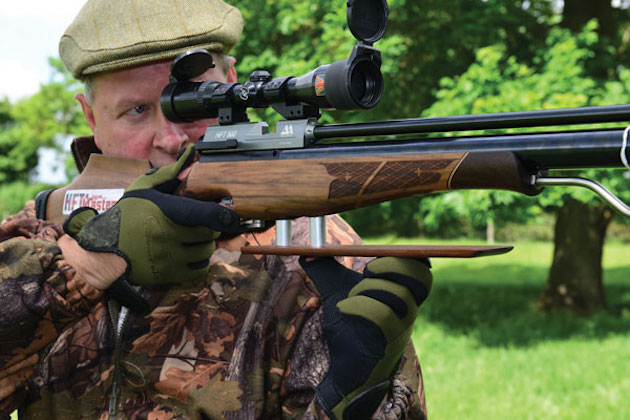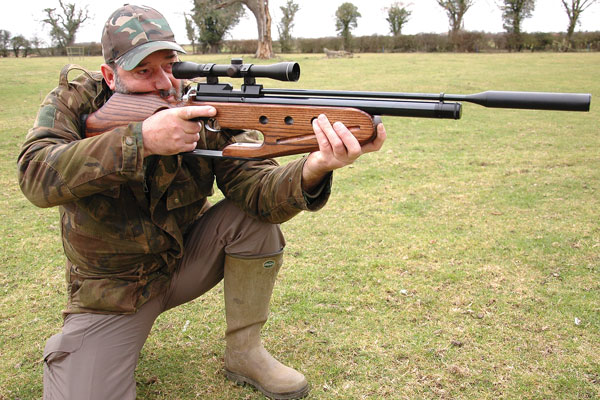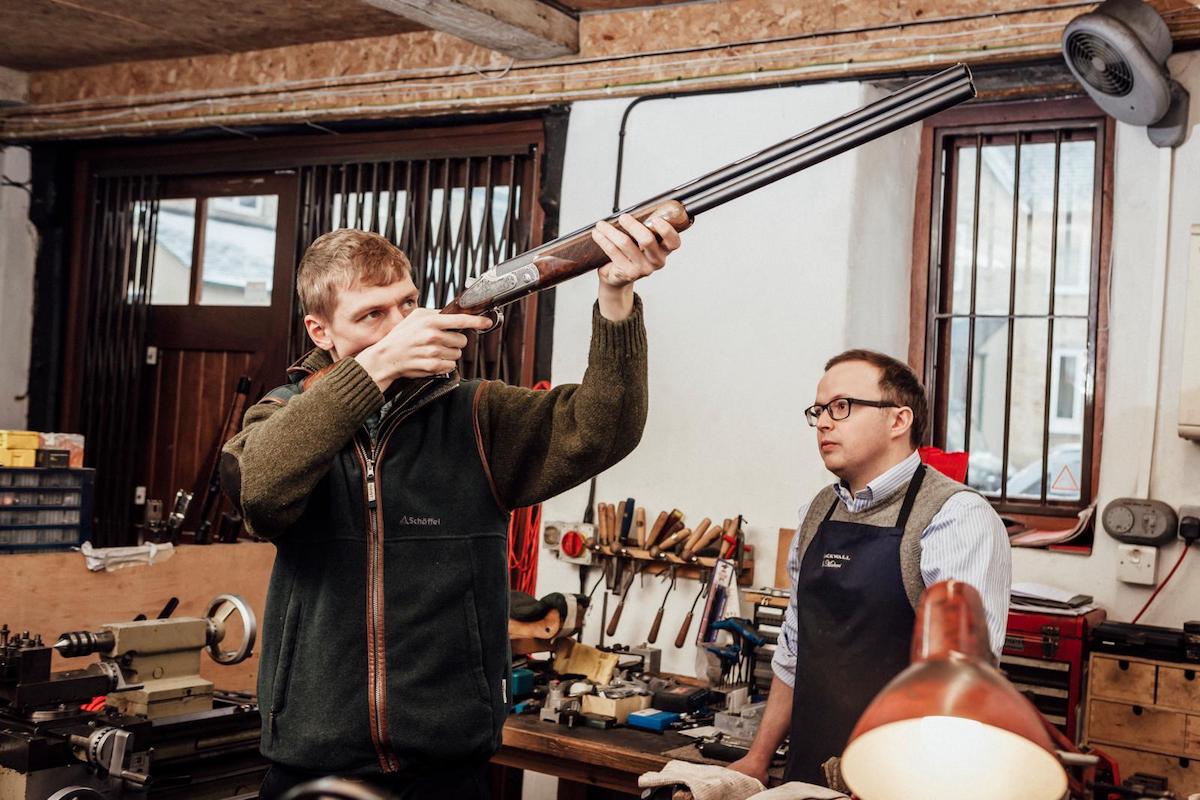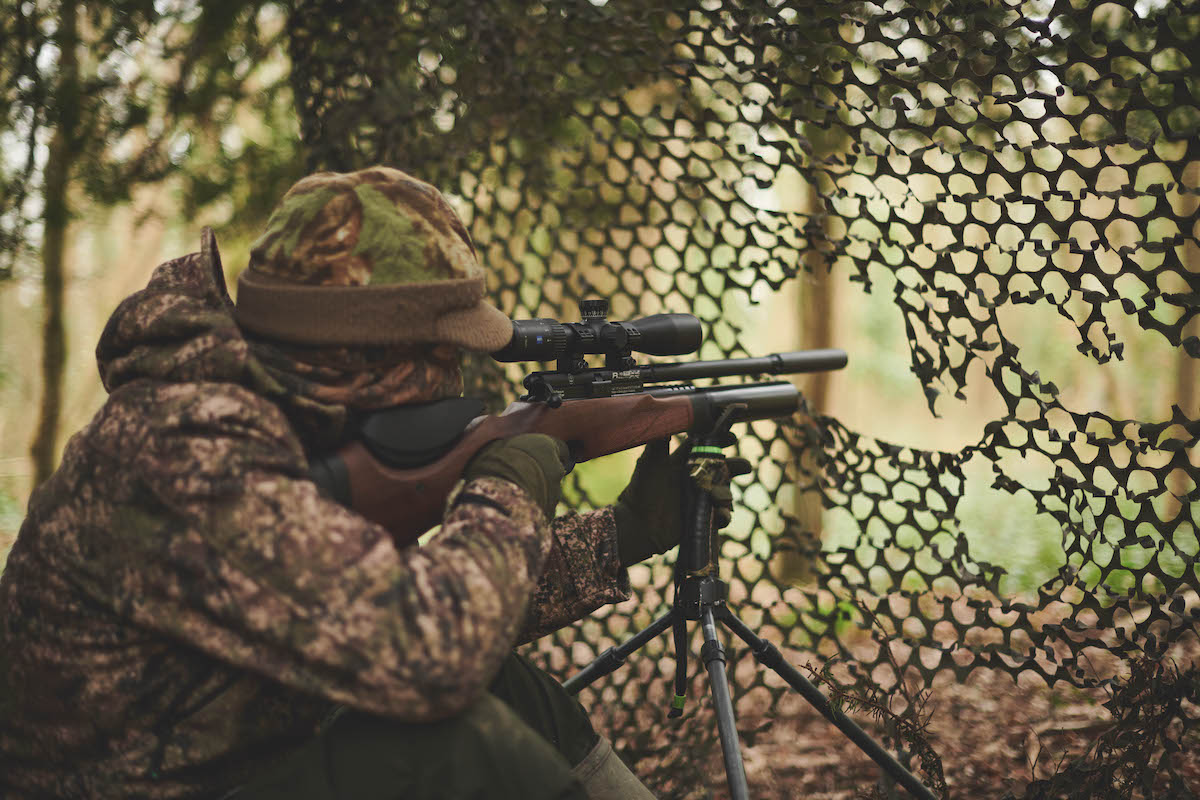How to get to grips with a hamster or raised forend
Hamsters, or raised forends, are becoming ever more popular in outdoor HFT and FT competitions – is it time you tried one, asks Peter Knight

A raised forend can transform handling
It seems incredible now when I consider it, but for several seasons I just didn’t get the advantage of a raised deeper forend (or hamster, as the silly name has it). I had a friend fit one to my trusty old Air Arms S400, but ended up removing it after several shoots, regarding it as something of a gimmick.
Yet suddenly it dawned on me. Maybe it was getting caught mid-competition by some devious course-setter – I can’t remember now – but believe me, after proper evaluation, I am now a full devotee of the raised forend.

Some of us are talented enough to make a full custom stock – note the deep forend
Advantage of the raised forend
What it really comes down to is the fact that we need extra height in that forend section of the stock, just forward of the trigger, where we support the rifle. An elevated knock-down target – up a tree, at a 40-degree angle for example – can be a real challenge when you shoot off the peg in HFT. A totally shallow forend, with no meat to speak of, can leave you floundering and having to adopt a radical, unsupported stance to get any chance of the shot.
Take the same shot with a modified stock, or an adjusted hamster section where the lead hand has a much higher support section, and it’s a different game entirely.
Understandably, the average airgun manufacturer produces guns with stocks designed to fit Mr Average: sleek, compact, and predominantly aimed at the hunting fraternity, where overly heavy and ungainly models would be fairly inappropriate.
That’s the theory at any rate – and it’s not far off the mark where mass airgun sales are concerned. Look to our own, more specialist, competition sector of the market, and the demands of a competition rig are somewhat different. Dedicated guns such as the mouthwatering Air Arms FTP900, designed from scratch for top-level FT shooting, come fitted with a fully adjustable laminate stock, which obviously includes that elaborate stock raiser.
Other rifles such as the BSA Gold Star SE and the Air Arms HFT500, are dedicated models aimed at HFT shooting – and again carry full stock adjustments to cater for the fussy competition shooters among us.

Several specialist rifles come fitted with adjustable hamster mechanisms – this is the Air Arms FTP900
Personal taste
All this talk of modification and customisation is all very well but, as always, personal taste and requirements play a big part. Many shooters are quite content to keep things simple – and if the original factory slimline sporter woodwork does it for you, then who can tell you any different?
I shot for years with an Airmasters sporter stock on my HW 77. It was technically a custom stock, and the walnut was quite beautiful – yet the entire forend was slimline, with no deep section at all! I was young and well-trained, however, and just adapted to awkward shots as necessary, without even thinking twice about it. Now, though, I’ve reached the stage where I’m prepared to make life easier and grab every advantage possible. A deeper stock can make a huge difference, and can just mean less strain and more support.
There’s a great selection of add-on after-market hamsters too, from the likes of Air Arms, Rowan Engineering and others, so get down to your local club and try a variety of guns with more elaborate stock designs. It might just be the best move you make! (Read more on getting an air rifle shooting permission.)

Try a temporary block of foam, balsa or polystyrene to see if it helps
Creating your own raised forend
Not everyone wants the expense of going to a full-on competition rifle, of course, and the option of modifying the stock of our standard gun is an inexpensive option for many. For those of us who are talented enough, making a custom stock from scratch is the perfect opportunity to get dimensions all in place and to our liking from the start. In this type of scenario, a super-deep forend section can be incorporated from the off, so it really doesn’t have to be an afterthought.
For those of us who neither have the creative talent nor the precision tools necessary for such work, there are several individuals, such as Warren Edwards or the legendary Gary Cane, who can turn our dream gun stocks into reality. It’s not always a cheap option, but once you have decided that a particular gun is a keeper and that shooting is the sport for you, then some serious investment in custom-made woodwork can truly transform your enjoyment – and just as importantly, it can transform your performance!
As always, I would also point out that many of the advantages and modifications that are carried out to competition guns could well be of benefit to shooters who only go hunting. Maximising accuracy and hitting the target more easily are what the whole exercise is about, after all; and that surely has to be in the interests of any serious hunter as well as those in the competition fraternity.

FT shooters have taken the raised forend to new heights
How to make your own hamster
Before you jump in and drill into your treasured gun stock, just make up a simple temporary block to get an idea of how the raised area will feel. This can be polystyrene or compressed foam – anything that will maintain its form and create that deeper section of stock.
Handle the rifle with this temporary spacer in place and see how it feels. Simply add or take away some of the material until the size and depth of the spacer is optimised. When all feels right, take a note of the measurements, as this will act as the template for any block design made from wood.
Even the most ham-fisted among us can attempt to making our own hamster or stock-riser, although it does assume a reasonable level of common sense. If you don’t feel confident, leave the job to a more practical friend with the tools and know-how.

1. Making your own hamster can be quite simple. Get an offcut of wood (timber yards are helpful for this), and cut it to size once you have experimented. You’ll also need small tubes – either plastic or metal – for the spacers, two bolts, and two screw insert holders.

2. Practise on a wood offcut, then carefully drill two holes in the stock, and recess the two bolt holders. Set these in place, with a small amount of glue or resin for added strength. Measure the same distance between the two holes, and drill through the hamster plate, keeping the distance between the holes the same.

3. After allowing enough time for the glue in the holes to set, assemble the hamster; screw the bolts into the block, then into the spacers, and then into the bolt retainers. Use bolts with hex heads, and it is easy to nip up with an Allen key.
The right way to grip the peg
When you shoot Hunter Field Target, a key rule is that you need to grip the post or peg while taking the shot. But there is definitely more to it than that, and if you are after top-class results and any chance of finishing in the silverware, you need to optimise your approach at every stage.
A deep hamster can help raise the gun up to a good level so the sight line is higher; and when you’re on uneven, awkward or low-lying ground, this can relieve the tension. But how you grip that peg can still make a big difference. Keeping the hand low to the ground is preferable, for a more stable shot, with the underside of the gun or hamster resting on top, but certain deliberately awkward shots laid out by the course-setters will require you to go high on the peg.
This article was originally published in 2017 and has been updated.








